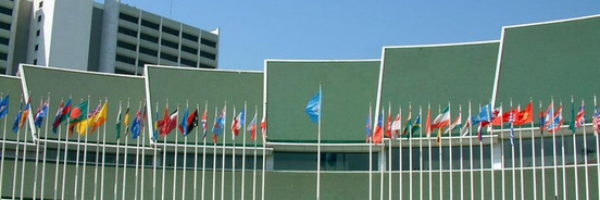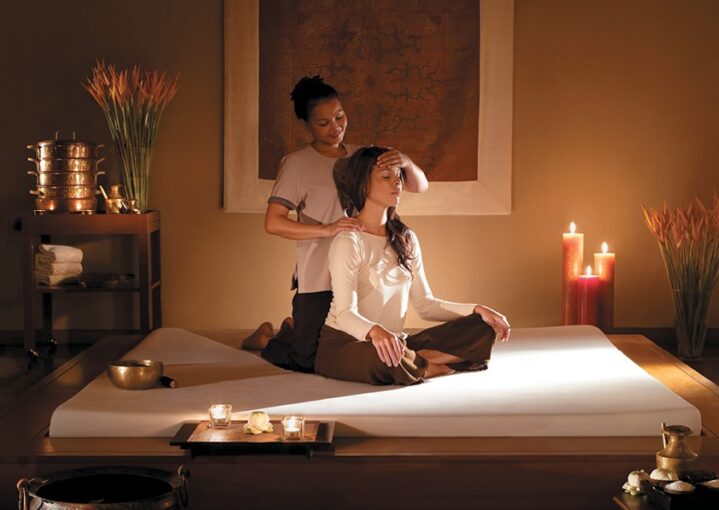
Feeling ancient healing
Exploring wellness the Thai way: Thai massage has, on occasion, been called the lazy person’s guide to yoga, or a way to exercise without lifting a finger.
You never forget your first Thai massage, especially the day after. You’re pressed, pushed, circled, slid, stretched, rolled, shaken, chopped and patted, for a good two therapeutic hours. Tiny, deceptively strong hands, thumbs, feet, knuckles, forearms, knees, palms and elbows, twist, bend and mould you into poses, lull you to sleep and seemingly rudely awaken the senses. Your initiation into Thai massage is confusingly enjoyable.
The exact origins of traditional Thai massage are somewhat obscure. Many of the ancient scriptures, written on coconut leaves, documenting the origins and techniques were said to have been held in the old capital of Ayutthaya. These were mostly lost to eternity, when the Burmese stormed the city in 1767 and burned it to the ground. The few surviving fragments of documents were apparently carved into stone by order of King Rama III in 1832, in an attempt to preserve what remained. These are currently stored in Bangkok’s famous Wat Po temple, which is also still an important centre for the teaching and passing on of traditional massage know-how.
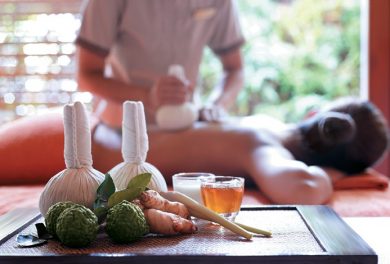
What is widely accepted is that the ancestry of traditional Thai massage, which is part of traditional Thai medicine and healing, can be traced back some 2,500 years. The roots of Thai massage are believed to be anchored to the private physician and friend to Buddha, Shivaka Komarpaj, who combined stretching with massage and herbal remedies, to heal ailments amongst monks and nuns.
Traditional Thai massage is a total bodywork that involves motions similar to acupressure, shiatsu massage and yoga stretching. It aims to realign and harmonise the body, balance the meridians, release tension and increase circulation. Performed on a mat or firm mattress on the floor, the patient or guest is fully clothed, usually in loose-fitting pyjamas, or the like, that allow for freedom of motion and stretching, since no oils are used.
This massage style blends pressure point focus, the stretching of muscles and compression methods, with stop and flow of blood circulation and gentle rhythmic rocking. When professionally applied, traditional Thai massage can not only help relax and balance the body and mind, but also stimulate the nervous and circulatory system, release blocked energy flow and ease muscle tension and pain. It can do wonders for headaches and migraines, and is also said to help relieve the discomfort of numbness, arthritis, back pain, constipation and other mild conditions. Other benefits can include increased flexibility over time, due to the yoga-style stretching, and also a reduction in stress, replaced by a stronger sense of wellbeing and relaxation.
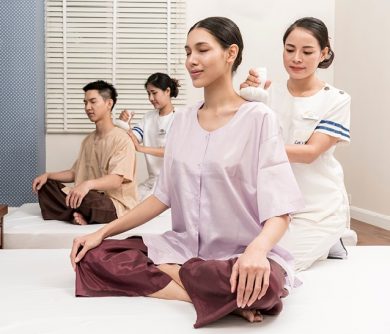
Typically, a treatment session lasts one to two hours. If you are expecting an instant sense of calm and wellbeing, such as with a more gently applied aromatherapy massage, then think again. Motions can be rigorous and vigorous. In places where the massage therapist finds blockage or muscle tension, he or she usually gets to work on it. Assisting removal of the tension can be somewhat painful. However, you don’t have to politely suffer in silence. Simply signal to your therapist, to ease up a little, while in places of intense pain or injury, you can advise them, in advance, to avoid further aggravation.
Beginning with the feet, if you’ve ever tried foot reflexology, you will notice the similarity of strokes and pressure. The soles, insteps and toes are pressed, squeezed, pulled and, if necessary, cracked, with that cringe-inducing sound that seems it should hurt, but strangely doesn’t. Traditional Thai massage tends to spend a long time on the legs next, what with so many different muscle groups and long energy lines to work through. Sometimes up to half of the entire treatment time deals with the legs alone. This is explained by the implication that the effects of the legwork extend beyond the confines of these limbs, to provide relief for internal organs and overall nervous system relief.
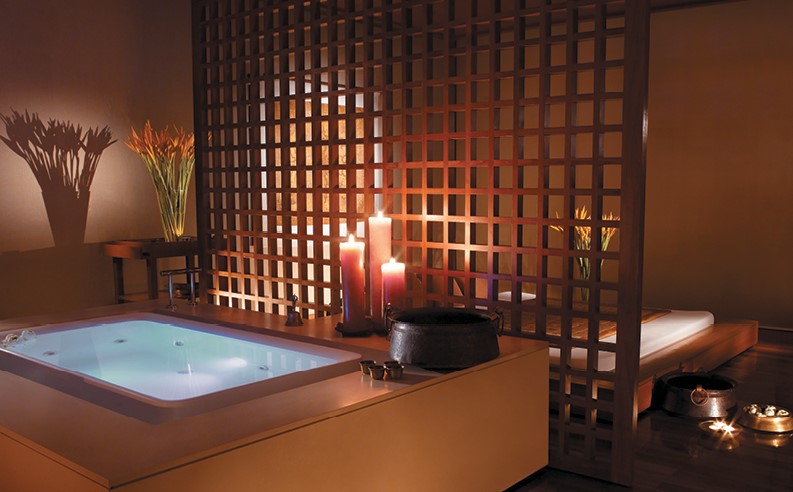

Traditional Thai massage is not recommended for everyone. If you have irritable skin conditions, open wounds, or have any serious conditions, be sure to consult your doctor first. Otherwise, just avoid the obvious, such as eating too heavy a meal right before treatment. No one wants your meal to repeat on you!
Massage places abound all over Thailand, and live here long enough or visit frequently, and you will find your local. Often there will be one particular therapist that just suits you and knows exactly how to unknot your stressed-out back or shoulders best. Traditional Thai massage treatments vary widely in price, often starting at 300B for two hours, all the way up into the thousands, at five-star locations. Whether cheap or expensive, there is a huge array of locations and surroundings, spas or massage shops, in which to indulge in a little ancient Thai healing.
If you prefer your massage experience a tad more luxurious, then check online for your nearest Let’s Relax Spa (letsrelaxspa.com). With locations all over Thailand, as well as in China, Cambodia and now Myanmar too, it’s easy to come by a four-star traditional Thai massage, at one of their urban boutique spas. Slide into their silk pyjamas for a 60 minute Thai massage at just 600B, or 1,000B for 120 minutes (prices include all tax and charges). Although there are multiple Bangkok locations, check out one of the newest, on the third floor at The Allez, adjoined to the Nana BTS Skytrain station. For a more intense healing experience, try their four-hands Thai massage, performed by two spa therapists, integrating a fresh, Thai-herb heated compress, at 1,100B for 60 minutes, or 1,800B for 120 minutes.
For the ultimate in luxury, CHI The Spa at The Shangri-La Hotel, Bangkok (shangri-la.com/bangkok), is highly recommended for unparalleled extravagance and memorable service. The opulence of treatment rooms at this spa makes for an incredible experience of wellbeing, for those with deep pockets and discerning senses. Located on the Chao Phraya River, in the Krungthep Wing’s third floor, CHI The Spa’s traditional Thai massage is priced at 3,600B++ for 90 minutes.
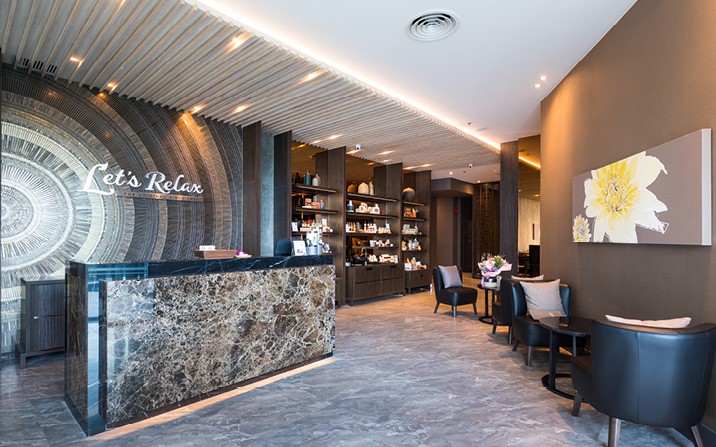
Whatever your choice of locale, this ancient practice of healing has the tried and tested potential, to add value to your weekly wellness routine. Why not pull on the pyjamas and give it go? At the very least, you will get a lazy, stretchy workout, and be able to switch off from daily life for an hour or two.
www.nikkibusuttil.com @rollergirlnikki



